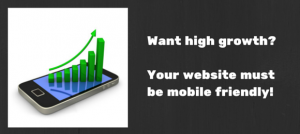Mobile commerce (also known as m-commerce) offers the convenience, speed, and flexibility that can be considerable advantages in the manufacturing and distribution industries. The ability to transact anywhere––whether it’s on the shop floor, in the stock room, or on the go––can mean increased order volume and more loyal customers.
Mobile commerce is growing at a rapid pace. A recent report by Business Insider states that in 2016, mobile commerce will hit 20.6% of overall e-commerce ($ 79 billion) and by 2020, it will make up 45% of total e-commerce sales, equaling $ 284 billion.
For B2B companies, mobile commerce is quickly becoming a priority. Here are some common mobile commerce features that every B2B solution should have.
Mobile Commerce Features You Need Now
Personalization
In this custom consumer landscape, it goes without saying that personalization is not only necessary when designing software, it is expected. In the manufacturing and distribution industries, customization is imperative, as it saves on time and cost and creates a tighter supply chain.
A streamlined mobile commerce platform will anticipate the type of purchases the customer needs to make and incorporate features to help them make faster decisions. This can include information like customer-specific catalogs, customer-specific pricing/promotions, favorite items, and order history.
Quick and Easy Ordering
Mobile commerce should allow customers to place orders at the moment of purchase intent. Features like instant ordering, past order duplication, and real-time inventory updates can help customers efficiently place orders on the go.
Easy product search is also a key feature in m-commerce. Amazon has created a feature in their e-commerce app called Amazon Remembers that is creating quite a buzz. Consumers can take a picture of a product they see, which is then matched to one in Amazon’s inventory.
Integration
The manufacturing and distribution industries rely on fast order fulfillment. One mobile commerce feature your vendor should be able to provide is the ability to integrate with your ERP or other back office systems.
In addition, if your sales teams are in the field using mobile devices to place orders, and your customers are also placing orders on the web from their computers, it’s important that all of these channels be integrated onto one platform where you can gain complete visibility into order activity.
Usability & Mobile First Design
Mobile commerce solutions should be specifically designed for smaller devices. In other words, they should be native mobile applications, as opposed to a web experience that has been shrunk down and “optimized” for a mobile device. A native mobile app will provide a much better user experience.
A native mobile app should also allow customers to access the ordering interface when offline––and then instantly sync that order to your back office systems for processing when connected again. It should also provide suppliers with new ways to market to and keep in touch with customers through push notifications and in-app messaging.
Analytics
No modern commerce tool would be complete without the ability to analyze various forms of data. A good m-commerce platform will allow you to run reporting and analyze metrics on customer, order, and product data (among other things). Customer-centric experiences are built on the ability to collect these data sets.
The capacity to design a buyer journey is heavily reliant upon the information you collect. Big data companies, like Google, are now offering extensive data on mobile and in-app usage that you can also harness on your mobile commerce quest.
There are many mobile commerce features to consider these days, and recognizing what is necessary for your particular business is the key to implementing an effective solution. Mobile commerce features run the gamut of options, but it is important to look for a solution that includes customization, a great user experience, integration, and reporting capabilities.
Digital & Social Articles on Business 2 Community(44)




